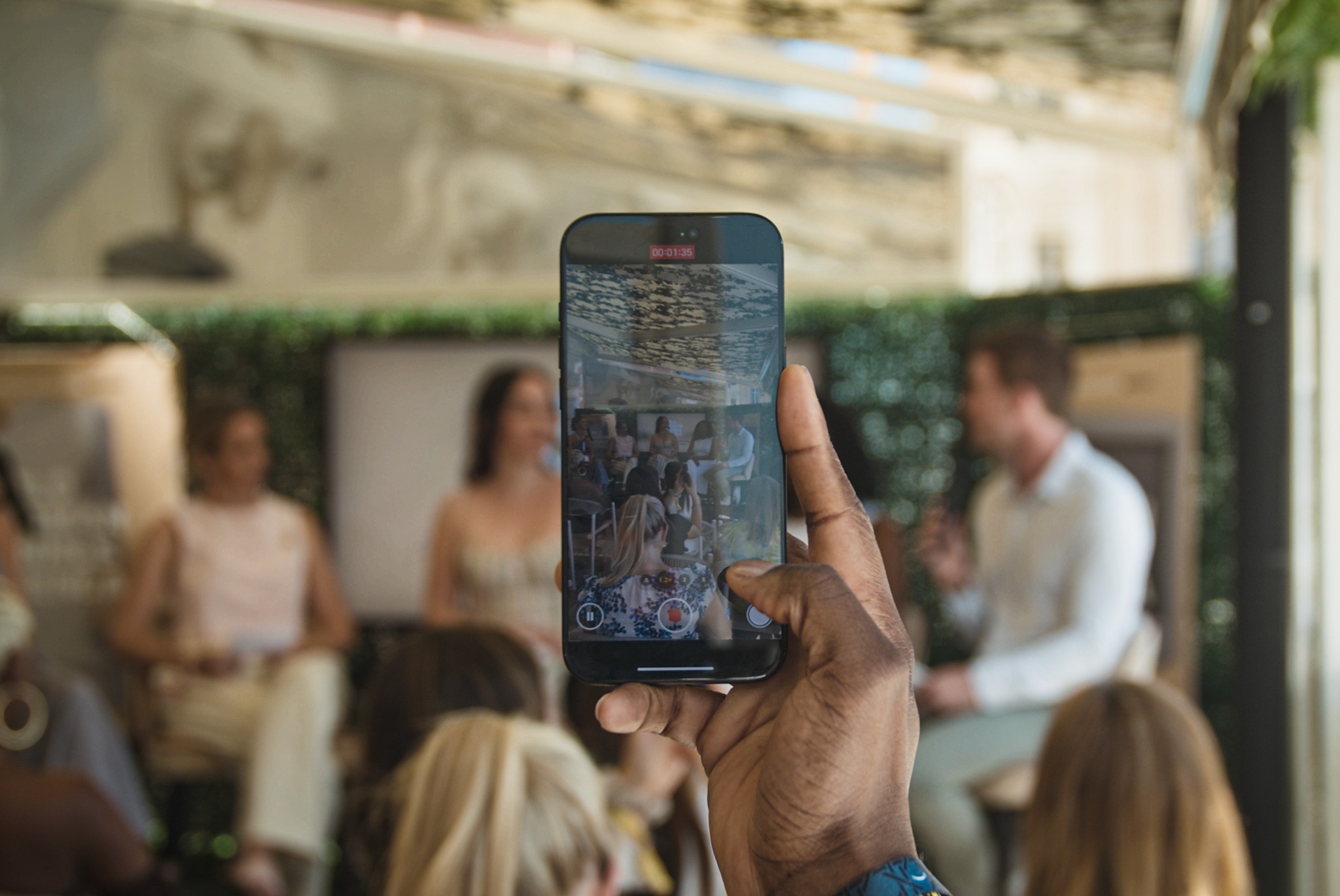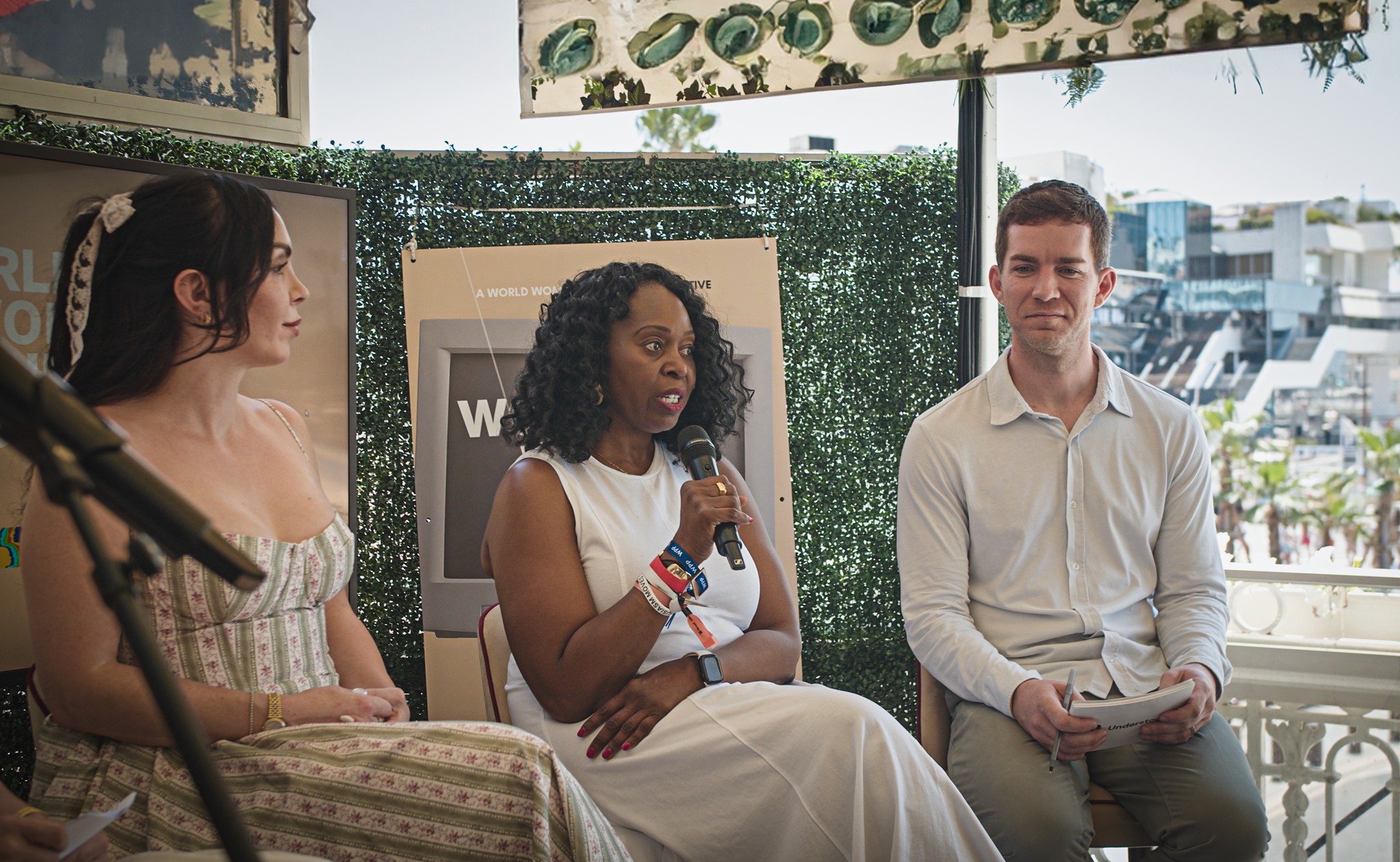The choices we make today will determine whether technology serves as a bridge to equality or a barrier to inclusion. At this pivotal moment, industry leaders and global organizations are navigating how to approach the digital transformation of the ad industry and the world around it. During the Cannes Lions International Festival of Creativity 2025 we heard from a range of experts and advocates speaking on the role the advertising industry must play in building an inclusive digital world free from stereotypes.
Publish Date: Jul 14, 2025

Charlotte Scaddan, the UN's Senior Adviser on Information Integrity, provided crucial context to the challenges facing the futureproofing of an inclusive world: transparency. She delved into the importance of ad tech transparency, emphasizing that it's both good for business and a sustainable future.
While Scaddan focused on the implications of information integrity for tackling climate change, how we navigate our digital future – including within the advertising industry - is also a matter of war or peace, of poverty or prosperity, of inequality or inclusion.
AI must never advance inequality.
– António Guterres, Secretary-General of the United Nations
The stakes could not be higher. Late last year, António Guterres, Secretary-General of the United Nations shared such concerns with the Security Council, emphasizing that 'AI must never advance inequality', urging a safe, secure, inclusive future for technology. The UN's Pact for the Future commits to establishing an independent international scientific panel on AI and initiating a global dialogue on AI governance within the United Nations—giving every country a seat at the table.
The future we are talking about is already happening.
Some experts in generative AI predict that as much as 90% of content on the internet could be artificially generated within a few years (Europol 2022). As this content floods the internet, we could see decades of progress on representation being stalled or worse. This pattern has already been observed by some experts who notice a gender bias towards men when generating images of high-income jobs like doctor, CEO and engineer.
AI systems should be created by diverse development teams...[to] reduce blind spots that can lead to biased AI systems.
– Zinnya del Villar, Director of Data, Technology, and Innovation at Data-Pop Alliance.
In an interview with UN Women, AI Expert Zinnya del Villar emphasized that centering diversity of experience and abilities will contribute to more inclusive solutions that meet diverse needs “AI systems should be created by diverse development teams made up of people from different genders, races, and cultural backgrounds. This helps bring different perspectives into the process and reduces blind spots that can lead to biased AI systems.”
Beyond the multiple applications and uses of AI, the conversation needs to consider who is building and using the tools to minimize risks. The commercial implications are significant. As Charlotte Scaddan, United Nations, noted, we must "demand transparency in the ad tech supply chain…so you're not inadvertently supporting ideas that don't align with your values."
The challenge extends beyond the tools and representation, to fundamental questions of trust. The 2024 Edelman Trust Barometer found that only 30% of respondents embrace artificial intelligence (AI) globally, while 35% reject it.
This trust gap represents both a challenge and an opportunity for brands committed to inclusive practices.
The path forward requires inclusive intent and meaningful partnerships. During an Unstereotype Alliance organized panel discussion, "Building an Inclusive Digital World", Alliance members shared how inclusive design can reshape digital experiences for marginalized communities.
Christina Mallon, Head of Inclusive Design at Microsoft, introduced a soon-to-launch project with the Unstereotype Alliance that gives disabled communities control over AI-generated visual content, addressing misrepresentation and exclusion. This initiative represents a forward-thinking approach to ensuring that emerging technologies serve all communities authentically and eradicates stereotypes.
Representation is one of the biggest barriers of the disability divide.
– Christina Mallon, Head of Inclusive Design, Microsoft
Cassandra Illidge, Vice President of Global Partnerships at Getty Images, shared Getty Images' Photo Archive Grants Program for HBCUs (Historically Black Colleges and Universities), which preserves Black history by digitizing photographic archives. She highlighted how strategic and authentic partnerships are a key component of the project and drive long-term inclusion and sustainability.

The importance of community-led narratives cannot be overstated. Rachel Lowenstein, Co-Founder and Chief Creative Officer of Neu Project, built on the importance of visual narratives in representing communities. She spoke about #AutisticOutLoud, a project co-created with Getty Images and Hiki, that invited autistic individuals to shape their own visual narratives through self-portraiture.
Charlie Doolittle, Head of Public Partnerships at Understood.org, emphasized the role of inclusive physical and digital environments in creating impactful content, noting the importance of accessibility features and inclusive processes.
During the conversation, all panelists recognized the promising potential of digital tools, including AI, for broadening and driving inclusion but only if approached with due consideration and solutions to accommodate differing historic contexts and needs.
Real-life examples were shared during the session: Rachel Lowenstein said she uses AI “as my neurotypical bestie” listing AI tools that help neurodivergent people with tasks, removing barriers to creativity. Christina Mallon also shared examples of tools from Microsoft that drive accessibility including transcription, content summarization, translation, and more.
The closing message from discussions at Cannes Lions 2025 focused on futureproofing representation and inclusion through community-led initiatives, data ownership, and AI training and education. The speakers underscored that when AI centers lived experience and humanity, it can dismantle stereotypes, foster connection, creativity, and accessibility.
The Unstereotype Alliance is extending this work through a new AI working group which aims to identify how marketing and advertising professionals can best embrace AI as a tool for inclusion and continue to futureproof their work against stereotypes. This initiative represents the Alliance’s commitment to proactive, systematic change.
The future of digital inclusion depends not on any single innovation, but on our collective commitment to ensuring that technology serves humanity in all its diversity.
This industry-first study proves inclusive advertising drives sales. The study was conducted with leading researchers from Saïd Business School at Oxford University, and leveraged proprietary data provided by Unstereotype Alliance members Bayer Consumer Healthcare, Diageo, the Geena Davis Institute, Kantar, Mars Incorporated, Mondelez International and Unilever.
